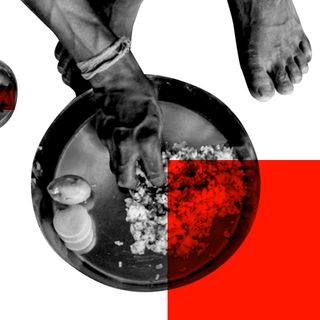A new study finds child labor is still a raging issue in the chocolate industry almost two decades after giants such as Nestlé, Mars, and Hershey pledged to abolish the illegal practice from their supply chains. Now, approximately 1.5 million children have been found to work in cocoa production globally, with a majority concentrated in the West African nations of Ghana and the Ivory Coast, the largest producers of cocoa in the world.
In the past decade, child labor in the cocoa industry of these countries has increased by 13%. Now, 43% of children between the age of five and 17 in the region engage in “hazardous child labor” in the cocoa industry — that is, work that exposures the children to chemicals, that requires long work hours often into the night, and requires children to use sharp tools.
Child cocoa workers have increased despite chocolate brands signing the Harkin-Engel Protocol almost two decades ago, which, at the time, pledged to create a “credible, mutually acceptable system of industry-wide global standards, along with independent monitoring and reporting, to identify and eliminate any use of the worst forms of child labor in the growing and processing of cocoa beans.” Since then, these companies have missed three deadlines to eradicate child labor from their supply chains in 2005, 2008, and 2010, the Washington Post reported.
Related on The Swaddle:
Reports Warn of Rise in Child Labor in India Due to Pandemic Economic Crisis
The 2019 Washington Post report identifies one reason for continued child labor as chocolate companies’ inability to keep a vigilant record of the farms from where they source cocoa, which is often sold through middlemen. In 2019, Nestlé was only able to trace 49% of its purchased cocoa to origin farms; Hershey, less than half of its cocoa; and Mars, a mere 24%.
These chocolate brands have repeatedly asserted their desire to end child labor within their cocoa supply chains, but critics say it’s merely an example of “mind-boggling hypocrisy,” The Guardian reported. To that end, even a lawsuit alleging chocolate brands knowingly let child labor flourish under their purview — to meet their bottom line — is going on in the U.S. Supreme Court.
While it’s safe to assume most of the chocolate we consume today has, at some point, exploited child workers, one small comfort we can take from the latest report is the rate of child labor hasn’t increased in equal proportion to the growth of the cocoa industry in the two West African nations. This means children make up a smaller percentage of cocoa workers than they used to, even as the overall number of children working in the industry has increased. Intervention efforts in the past five years, such as “school construction, education, and vocational training, provision of livelihood services, and awareness campaigns,” have worked to reduce the degree to which the industry depends on child labor. However, the pervasiveness of child workers, as illustrated in the latest report, shows us these interventions are not enough. Government regulators need to put children’s rights before corporate profits.




